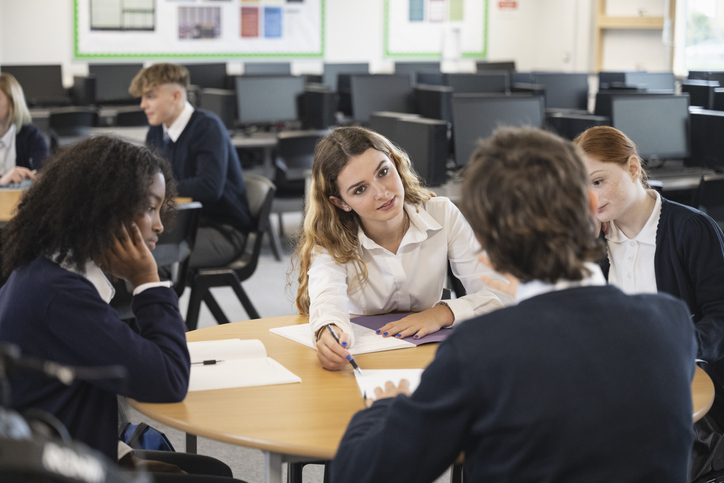
For a reminder of a whole host of ways to integrate writing into your lessons, from heavily scaffolded activities to free composition, Steve Smith's list of 50 writing activities for the MFL classroom is a great starting point. My personal favourites for a medium level of support are correcting false written statements, transforming text messages into full sentences and (a more challenging variation on sentence starters) writing beginnings for sentence endings.
Inspiration from comedy sketches
Adding to a sentence to make it longer and more complex is a well-established classic, but a fun variation is Considerably richer than you on EverydayMFL. In this activity, inspired by a Harry Enfield sketch, students build on a sentence beginning 'In my house I have' and try to outdo their partner with the number of items they can list and/or the complexity of the descriptions. For a less materialistic variation that practises past tenses and negatives, you could base it on Monty Python's 'Four Yorkshiremen' sketch, in which the comedians compete to prove they had the toughest childhood, using phrases such as 'We used to live in one room ... all 26 of us ... with no furniture ... and half the floor was missing ...' You get the idea!
The importance of receptive processing
Writing doesn't, of course, 'happen' in isolation from the other skills. On The Language Gym, Gianfranco Conti, Steve Smith and Dylan Viñales explore the reasons why, in order to get good at writing, students need to do lots of listening and reading, i.e. be exposed to lots of models of texts at a suitable level – and not just be exposed to them but have their attention drawn to the language features they can use in their own writing, including less obvious words such as prepositions, articles and connectives.
A great way of listing the language features that you want students to pick out of a reading text – and of reminding them to use those features in their own writing – is Danielle Warren's adaptation of Stephen Lockyer's structure strips, placing the text in the middle and the features in a grid around the outside.
One of my favourite activities for more advanced writers also uses strips and combines reading with writing. In this case, the strips are alternate strips of a text, and students work collaboratively to reconstruct the missing parts. I’m not sure who originally came up with this technique or what it’s called, but it’s one that I learnt when I did my teacher training and have used successfully many times since. It’s a great way of getting students engaged with the writing process and of working on coherence and cohesion through connectives, synonyms and pronouns. Here's how it works:
- You’ll need a reading text that’s slightly above students’ current writing ability – something with a clear structure like a story or an argumentative essay works best.
- In advance of the lesson, prepare a complete version of the text for each group of 3–4 students and a version cut into strips for every two groups. It’s a good idea to laminate them so that students don’t write on them and they can be used again. Also prepare a set of blank strips of paper for each group of students to write on.
- Give groups the complete text, with comprehension and vocabulary questions to answer.
- Once you’ve fed back on students’ answers, take in the complete text and give groups A and B alternate strips so that each group has half the text.
- Students work to reconstruct the missing sections of text on the blank strips of paper. It’s important to stress at this point that they don’t need to remember the original text word for word – they just need to write something that makes sense.
- Now take back the laminated strips of text and put each A group together with a B group. They now work together to rewrite the entire text from their alternate handwritten strips. Again, stress that the text just needs to make sense, so they’ll need to think carefully about transitions from nouns to pronouns and about using connectives to make the text flow logically.
- Finally, students can compare their texts with another A+B grouping to see what worked well and what worked less well.
Writing resources for any language on Teachit
Finally, you will, of course, find lots of fantastic writing resources on Teachit! The three featured here are suitable for teaching any language. Clare Seccombe offers inspiration for KS3 lessons in 20 ideas for supporting writing, while How can I improve my written work? provides two handy checklists for KS4 students – one reminding them to include a range of tenses, opinions, connectives, etc. and another of points to verify after writing. For KS5 French, German and Spanish, our newspaper templates can help to motivate students by providing an authentic purpose for writing. They include three appealing layouts, two landscape and one portrait, for students to choose from; the portrait ones are better for a print newspaper, while the landscape template would be great for an online news article.
For all our MFL writing resources, for KS3, GCSE and A-level, browse the complete writing skills collection.
